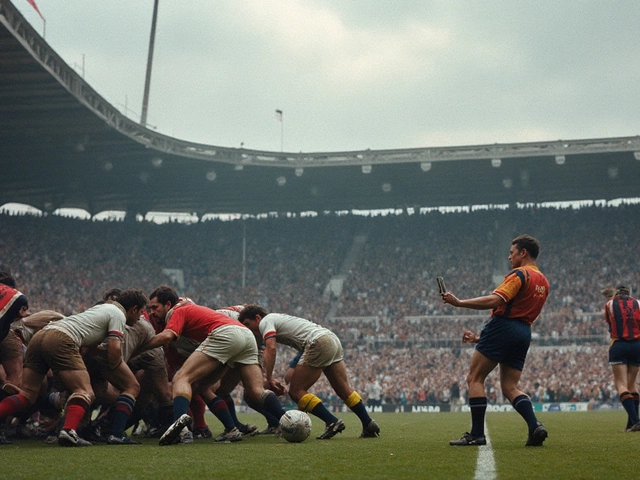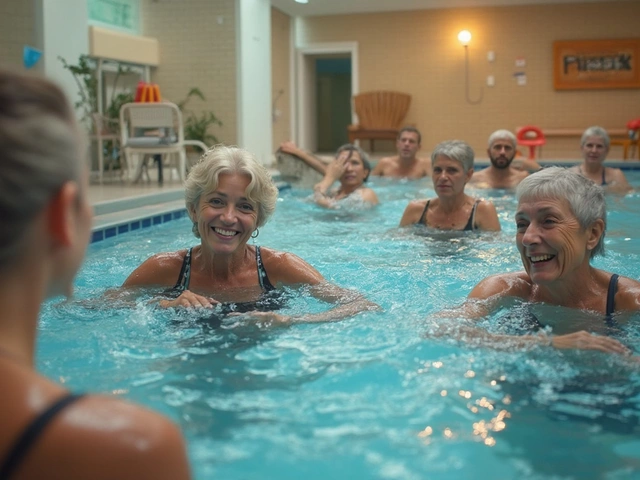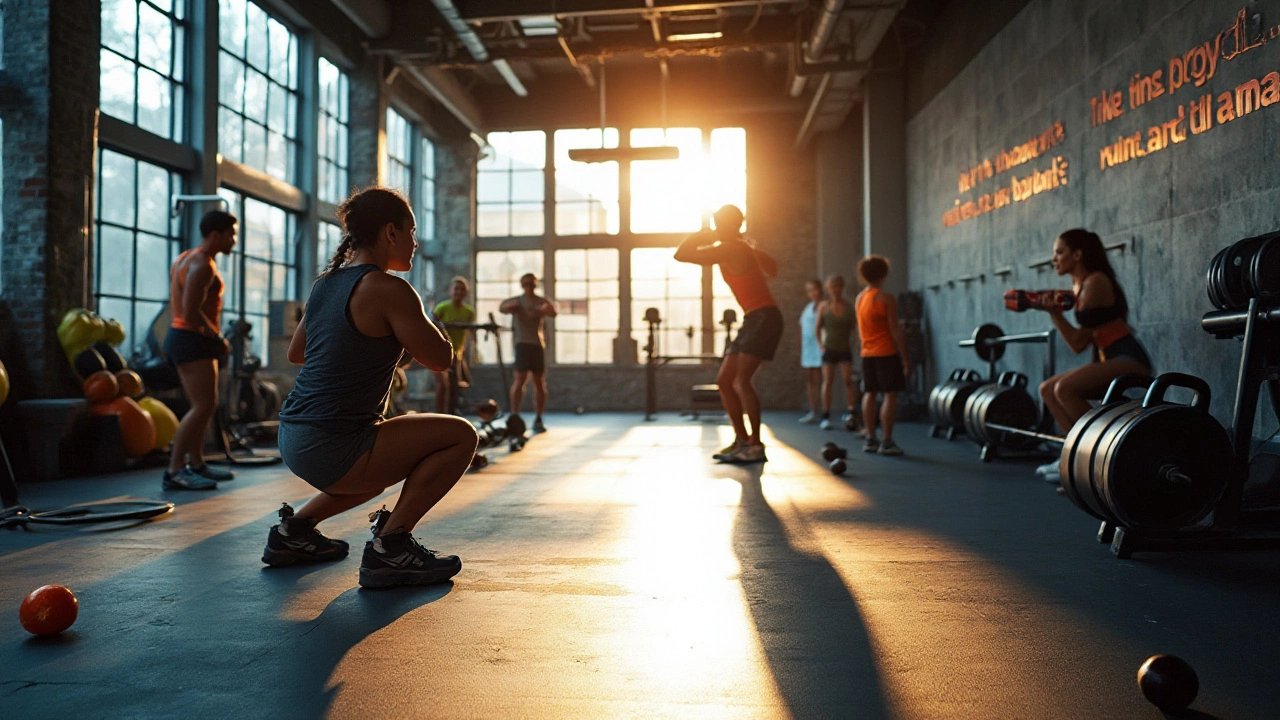
Gym Workouts January 9, 2025
Top 5 Essential Gym Exercises for Every Fitness Enthusiast
Step into any gym, and you'll notice a common thread among the most effective workout routines: they all rely on a handful of foundational exercises. These are the moves that truly stand the test of time, trusted by everyone from beginners to top athletes.
What makes some exercises indispensable? It's their ability to work on multiple muscle groups, improve strength, enhance endurance, and be adapted to any fitness level. Let's explore five such exercises that are the cornerstone of any successful gym routine.
- The Power of Squats
- Mastering the Deadlift
- Bench Press Basics
- Rows for a Strong Back
- Why Push-Ups Matter
- Crafting Your Routine
The Power of Squats
Squats stand as one of the most revered exercises in the world of fitness, and it's easy to see why. This basic movement brings together a symphony of muscle groups, engaging the quads, hamstrings, glutes, and even your core. When executed with proper form, squats don't merely target your legs but ignite growth and increase strength across multiple fronts. They're a workout staple, particularly in strength training, and they form the backbone of many successful gym workouts.
Performing a proper squat isn't just about dropping your hips and rising back up. The positioning of your feet, the depth of your squat, and the distribution of weight from your heels to your toes—all of these factors come into play. For beginners, mastering the bodyweight squat is essential before moving on to more challenging versions like the barbell back squat. Once you're comfortable with bodyweight squats, adding weight helps to increase muscle hypertrophy and strength. Squats also improve balance, mobility, and flexibility, crucial elements for athleticism and everyday movement.
"Squats are one of the best exercises you can do for your strength and muscle development," says Mike Boyle, renowned strength coach. "They engage multiple muscle groups at once and mimic functional movement patterns you use in daily life."
For those looking to maximize their efforts, integrating variations like goblet squats, sumo squats, and pistol squats can keep things interesting while challenging different muscle groups. Goblet squats, for instance, aid in maintaining proper form with the added benefit of developing upper body strength, as they require you to hold a dumbbell or kettlebell at chest level. Sumo squats, with a wider stance, put more emphasis on the inner thighs and can offer a refreshing twist to the usual routine. For the true challenge-seekers, the pistol squat—a one-legged squat—demands a veritable mix of strength, balance, and flexibility.
Adding squats to your fitness exercises gradually conditions your body, allowing you to lift heavier weights over time. This gradual increase is commonly known as progressive overload, a key principle in strength training. Executing squats with varying reps and sets helps keep your muscles guessing, prompting steady growth and avoiding plateaus. You might consider a 5x5 (five sets of five reps) structure in one session and a lighter, higher-rep regimen in the next. By mixing up your routine, you'll not only enhance muscular endurance but also keep the sessions fresh and engaging.
Additional Benefits of Squats
Aligning squats within your fitness regime doesn't merely build muscle; it has far-reaching effects that influence other areas of your life. Research has shown that squats can boost your jump height, run faster, and even bolster your mental grit. Engaging in full-body workouts like squats releases endorphins, which are known to reduce stress and enhance mood. Besides, in a world where sedentary lifestyles often lead to posture issues and back pain, squats promote the kind of functional movement that counters these problems.Finally, let's not neglect the calorie-burning potential of squats. As they work on some of the body's largest muscle groups, they can help burn more calories than many other exercises when incorporated into an intensive workout of gym exercises. For those on a mission to shed pounds or maintain body weight, including squats in your routine is an excellent approach. Gym routines that incorporate exercises like squats make working out an invigorating, rewarding endeavor.
Mastering the Deadlift
The deadlift is often heralded as the king of strength training exercises, and for good reason. It engages a wide range of muscle groups, from your hamstrings to your grip strength, and is a true test of functional power. Whether you want to dominate in sports or just improve your everyday life, mastering the deadlift can be a transformative journey. To begin, it's crucial to understand that proper form is everything. A common mistake beginners make is bending their backs too much, turning a potential muscle-building move into a recipe for injury. Keeping the spine neutral as you lift ensures that your muscles—not your joints—are doing the heavy lifting.
The correct starting position is key: feet shoulder-width apart with toes slightly pointed out, grip the barbell just outside your knees, and pull it over the middle of your feet. As you initiate the lift, visualize pulling yourself up rather than simply yanking the bar. This mental cue helps in maintaining a deliberate movement, engaging the right muscles in the process. As the bar ascends, the hips and shoulders should rise simultaneously, avoiding the temptation to use your back as a lever. A fascinating fact is that the deadlift employs a wide array of muscles but still warmly welcomes all fitness levels, providing immense benefits with the evolution of your technique.
Deadlifts are not just about brute strength; they’re also about finesse. Maintaining a clear and focused mind during your sets can maximize results. Renowned strength coach Mark Rippetoe once said,
"The deadlift is more of a look at your character and work ethic than it is a mere gym exercise."This encapsulates the mental toughness needed to push through hefty lifts while maintaining form. Deadlifting with a mirror helps in correcting posture in real-time, acting like a feedback loop that guides you to perfection. This not only helps avoid setbacks but actively contributes to achieving fitness goals efficiently.
One might wonder about the benefits deadlifting brings beyond its apparent strength focus. As you progress, you may experience improved grip strength, core stability, and explosive power. Interestingly, studies indicate that including deadlifts in your gym workouts can enhance bone density—a crucial factor in long-term health. For added motivation, consider incremental progress like recording your lift stats or exploring variations like the sumo deadlift, which offers a different emphasis on muscles, providing a change to the routine and stimulating growth.
The adaptiveness of the deadlift cannot be understated. By varying your routine, such as incorporating deficit deadlifts or Romanian deadlifts, you challenge different muscle groups and avoid plateaus. Crafting a balanced workout plan around your deadlifts ensures a comprehensive fitness approach. By leveraging techniques like resetting at the bottom of each rep, also known as dead-stop training, your body can engage new muscle fibers, enhancing your fitness exercises efficiency. The journey of mastering the deadlift is as much about mental growth as it is physical, proving that with consistent effort great strength and well-being become inevitable partners.
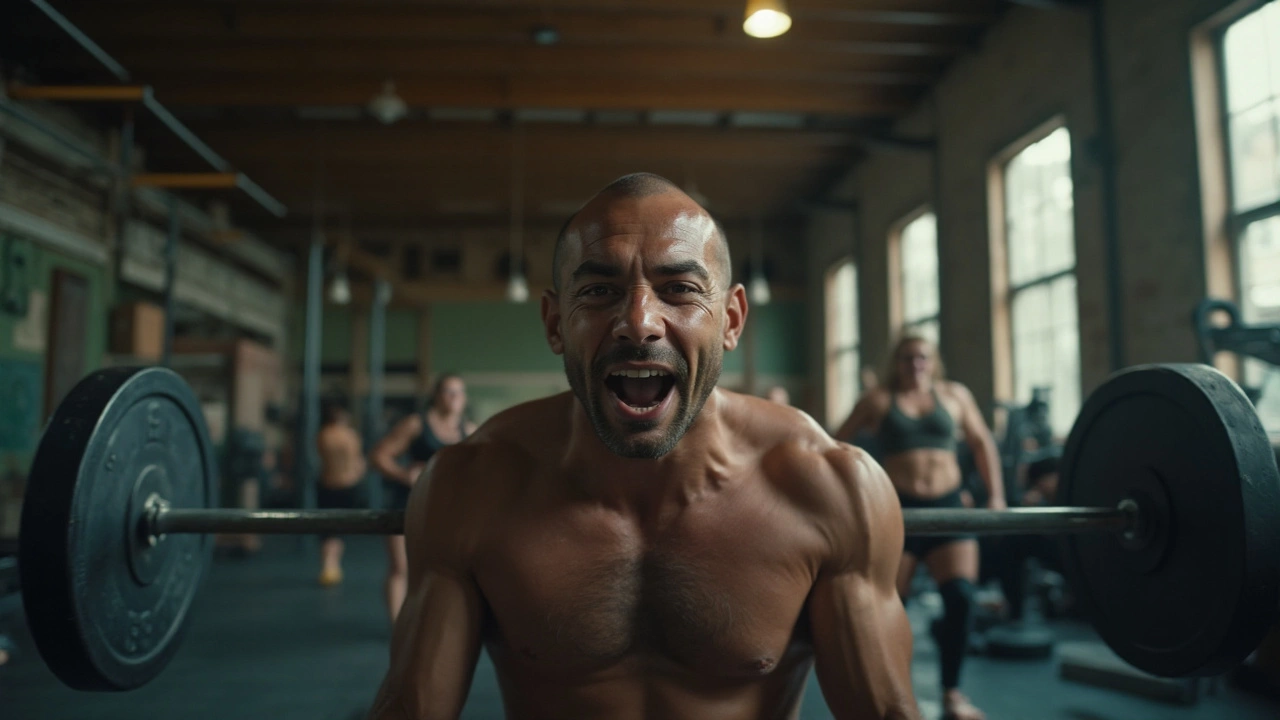
Bench Press Basics
The bench press is often hailed as the king of upper body exercises, and for good reason. Performed correctly, it develops strength and size in the chest, shoulders, and triceps. There's a reason it's one of the core markers of strength and power—a true staple in any serious gym workout routine. Whether you're aiming to build muscle mass or just looking to maintain a healthy and balanced physique, incorporating the bench press into your routine can contribute significantly to achieving those goals.
The bench press comes in various forms—flat, incline, and decline—all targeting different parts of the chest and providing variations that prevent adaptation and keep workouts challenging. The flat bench press is the most traditional form and serves as a comprehensive move for the entire chest. The incline bench press shifts the focus toward the upper chest, while the decline version targets the lower pectoral muscles. Proper form is crucial in not only maximizing its benefits but also in preventing injuries. Common mistakes include over-arching the back, lowering the bar too fast, and locking the elbows out abruptly.
Before diving into heavy weights, always ensure a proper warm-up: a few sets with lighter weights to stimulate blood flow and prepare the muscles for work. Initiate the movement by lying back on a flat bench, and with eyes aligned under the bar, position your feet firmly on the floor. Ensure a strong grip that feels comfortable and slightly wider than shoulder-width apart. Lower the bar slowly and steadily to the middle of your chest, and then press it back up, exhaling and engaging your core throughout.
Many athletes, including powerlifters and professional bodybuilders, swear by the bench press for tracking strength gains. Arnold Schwarzenegger once said,
"The bench press has long been a mark of strength, it’s a reflection of power most look to build."These words encapsulate why it's often the go-to lift when one wants to express brute upper body power. Keep a journal or records of your workout progress, measuring the increase in resistance or changes in body composition over time to employ a progressive overload strategy effectively.
Data from fitness studies highlights the bench press as one of the exercises with high activation of the pectoralis major, and surprisingly also the serratus anterior, when compared with other chest exercises. Research suggests incorporating variations can increase muscle engagement efficiency, helping you get the most out of your workout time.
While increasing weight is a key goal, don't sacrifice form. Shoulder safety is paramount, and maintaining proper alignment can prevent anterior shoulder pain—a common issue among heavy lifters. Listen to your body, and always be ready to scale back if something doesn’t feel right. The journey to a powerful bench press is as much about patience and consistency as it is about brute force.
Rows for a Strong Back
If you've ever admired the broad, muscular backs of athletes or gym enthusiasts, chances are they've incorporated rows into their fitness exercises. The row is a powerhouse move, engaging the muscles of your upper and lower back, as well as your arms and core. It's often considered a cornerstone of a balanced gym routine, targeting key areas for both strength and posture.
When done correctly, rows can help build a robust and resilient back, reducing the risk of injury while enhancing your overall performance in both gym workouts and daily activities. The beauty of rows is their versatility; whether with dumbbells, a barbell, or a rowing machine, each variation has its unique benefits. The bent-over barbell row, for instance, is a staple in many strength training routines, renowned for its effectiveness in building back strength and improving posture.
"A strong back is the foundation of a strong body," says personal trainer Samantha Lee, who often integrates rows into her clients' routines. "Not only do rows add definition and strength, but they also help with other exercises like deadlifts and squats."
Perfecting Your Form
Mastering the correct form is crucial for maximizing the benefits of rows and avoiding injuries. Stand with your feet shoulder-width apart and bend slightly at the knees. Hold the weight slightly beyond shoulder width, and maintain a flat back with a slight arch in the lower back. As you pull the weight towards your abdomen, think about squeezing your shoulder blades together and keeping your elbows close to your body. The motion should be deliberate and controlled, focusing on the muscles doing the work rather than the momentum.
Over 75% of injuries in the gym workouts happen due to improper form rather than the weight lifted. If you're new to this exercise, start with lighter weights and gradually increase as you perfect your technique. Implementing rows with precision can significantly improve your lifting capacity and enhance the effectiveness of your overall fitness exercises.
Variations to Try
There are numerous variations to keep your back workouts fresh and effective. Using different equipment changes the emphasis on muscle groups, such as t-bar rows focusing more on the mid-back, while seated rows can enhance the rhomboids and traps. Consider incorporating single-arm dumbbell rows for a unilateral workout that can help identify and correct any muscle imbalances. Another popular variation is the inverted row, which uses just your body weight and provides an excellent alternative if you're limited with equipment.
- T-Bar Row: Targets the middle of the back, engaging the rhomboids and traps.
- Single-Arm Dumbbell Row: Helps in correcting muscle imbalances and enhances core stability.
- Seated Cable Row: Excellent for engaging the lats and rear deltoids.
- Inverted Row: A great bodyweight alternative to traditional weighted rows.
Incorporating rows into your gym routine not only fortifies your back but also primes you for greater performance in other compound movements. Whether for bodybuilding, general fitness, or injury prevention, rows are an indispensable part of any comprehensive workout plan.
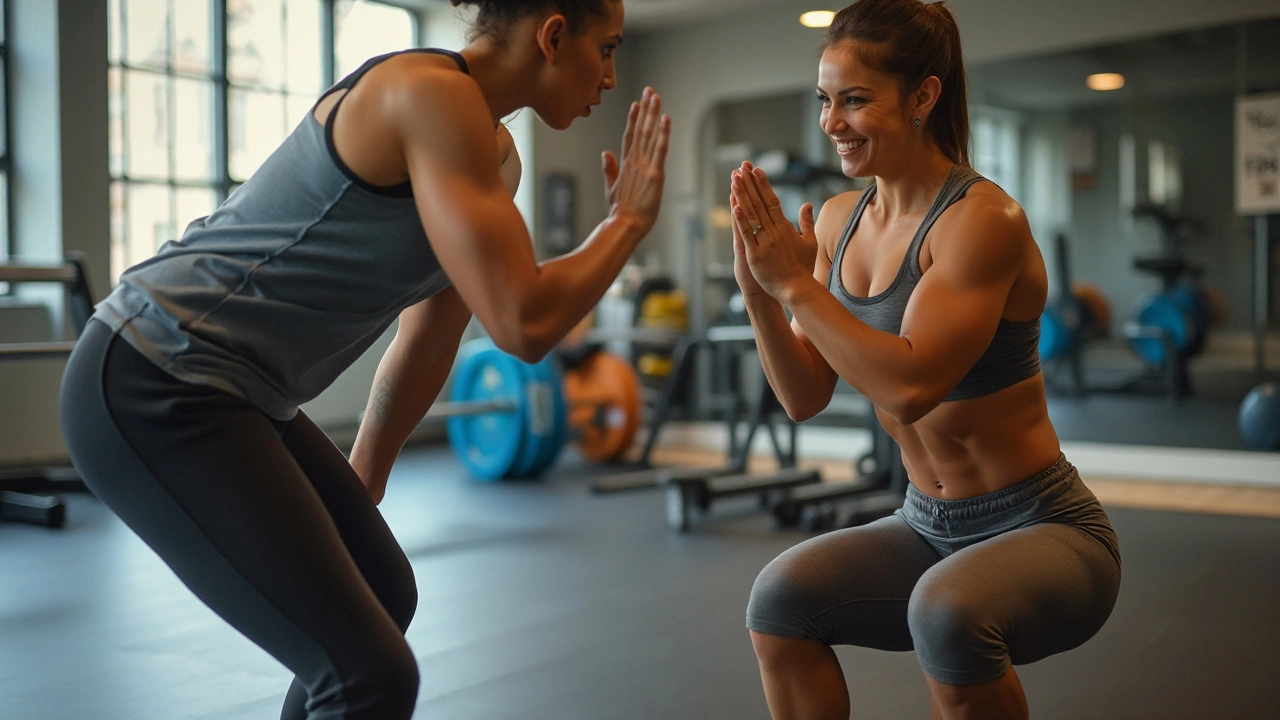
Why Push-Ups Matter
The humble push-up is often underrated in the world of complex gym workouts. Yet, this simple exercise packs a powerful punch when it comes to building upper body strength and enhancing endurance. By engaging a multitude of muscles, from the chest to the triceps and even the core, push-ups serve as a fundamental exercise in any fitness regimen. For those just starting their fitness journey, push-ups can be modified to be easier or harder, suiting all levels of strength and ability. This flexibility makes them an accessible and adaptable option for anyone looking to improve their fitness.
One of the greatest benefits of incorporating push-ups into your routine is their ability to improve functional strength. This is because the motion resembles many day-to-day activities that require the body to push against resistance. Additionally, for those keen on boosting their metabolic rate, push-ups can come to the rescue. Since they engage multiple muscle groups, they help increase your heart rate and, thus, contribute to calorie burning. A study published by the American Council on Exercise highlights that distinct strength exercises, like push-ups, can complement aerobic activities by enhancing endurance.
"Push-ups are one of the most efficient bodyweight exercises you can do. They work on multiple muscles at once and don’t require any equipment," says Dr. Wayne Westcott, a noted researcher in strength training.
For those interested in muscle symmetry, push-ups offer an excellent way to address muscle imbalances. When performed correctly, they distribute weight evenly across both sides of the body, encouraging balanced muscle development. Additionally, they're a perfect travel-friendly exercise because they require no equipment, reinforcing the idea that you don't need a fully-equipped gym to stay fit. In a world obsessed with expensive fitness gadgets, push-ups remind us of the effectiveness of simplicity.
Moreover, the versatility of push-ups allows for various modifications and progressions. Advanced variations like the diamond push-up or explosive clap push-ups provide more challenges for those looking to enhance their workout intensity. Doing these variations adds a dimension of fun and interest to workouts, keeping monotony at bay. In sum, embracing push-ups in your gym routine reflects a smart, efficient, and time-tested workout strategy, promising immense benefits over time.
Crafting Your Routine
Building an effective gym routine around the five exercises we've explored requires more than just knowing the movements. It's about understanding how they fit together to maximize your fitness and achieve your unique goals. Start by identifying what you aim to accomplish—whether that's building muscle, improving strength, or increasing endurance. Each goal will dictate how you structure your sessions, from the reps and sets to the rest intervals. While these five exercises form the basis, balance is key, and including variety ensures you're not just targeting one aspect of fitness but enhancing your body as a whole. The cornerstone of any good routine is consistency; results come from sustained effort, not sporadic gym visits. Remember, a well-crafted routine serves not just the body but also the mind, boosting confidence and perseverance.
Let's outline a basic plan. For those aiming to build muscle, a popular approach is to focus on compound exercises with heavier weights and lower reps, around 6-8 per set. If you're looking to enhance endurance, lighter weights with higher repetitions, in the range of 12-15, might be ideal. Don't forget to integrate rest and recovery—it’s during this downtime that muscles repair and grow stronger. Maintaining variety prevents mental weariness and helps avoid hitting a plateau, which can hinder progress. The American College of Sports Medicine suggests changing your routine every 4-6 weeks to keep your body challenged and engaged. Make sure that each week's plan includes these structured exercises while adding some cardio or flexibility work to make your gym workouts well-rounded and effective.
"The best exercise is the one you actually do." - Inspired by the words of renowned fitness expert, Dr. K. Cooper.
To accommodate different fitness levels and preferences, adapt your routine for personalization. Some might prefer exercising early in the day, riding the wave of morning energy, while others might find an evening workout relieves stress accumulated during the day. Flexibility isn’t just physical; it’s also how you approach your gym routine. Listening to your body is crucial. On days when energy is low, it’s fine to scale back or focus solely on mobility exercises. Conversely, on high-energy days, challenging yourself to lift heavier can be rewarding. By tracking progress, either through keeping a journal or using apps, adjustments to the routine become intuitive. This is how you build a sustainable lifestyle around fitness, one that adapts and grows with you.
Consistency doesn't mean monotony. Within each session, explore variations of the main exercises to keep muscles guessing. For instance, switch between barbell squats and goblet squats or alternate deadlifts with hex-bar lifts to work on different muscle fibers while maintaining the fundamental movement pattern. Over time, include accessory exercises that target smaller muscle groups, aiding in balancing muscle development across the body. Incorporate feedback from your workouts—how you feel post-exercise provides clues on whether the volume or intensity needs adjustment. By integrating these practices, you ensure longevity in your fitness journey, making it not just a routine, but an integral part of your life.

